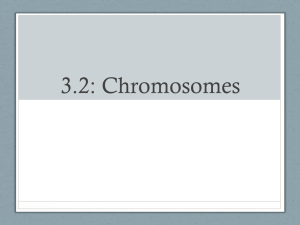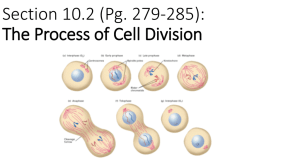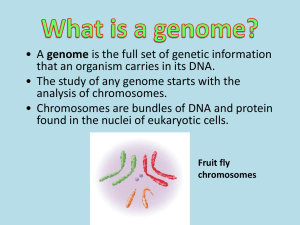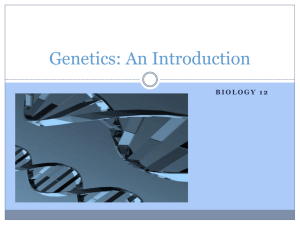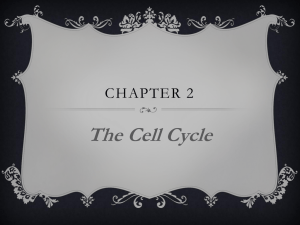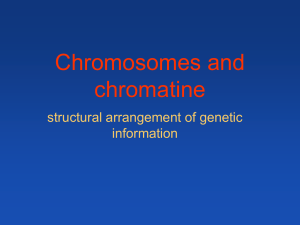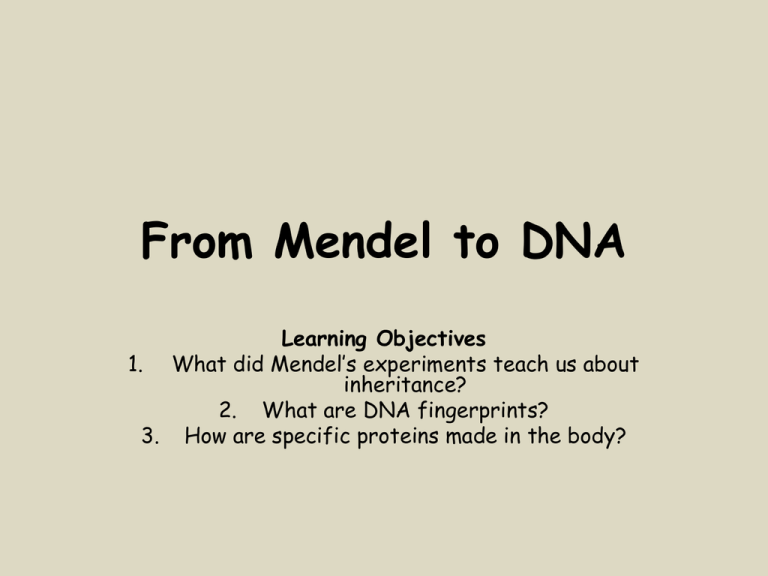
From Mendel to DNA
Learning Objectives
1. What did Mendel’s experiments teach us about
inheritance?
2. What are DNA fingerprints?
3. How are specific proteins made in the body?
Gregor Mendel
• Carried out breeding
experiments with
peas.
• Used pure strains of:
round, wrinkled,
green and yellow
peas.
• Cross bred the peas
and counted the
different offspring.
• Found that
characteristics were
inherited in clear
predictable patterns.
Mendel suggested that there were separate units
of inherited material. He realised some
characteristics were dominant over others and that
they never mixed together.
Inheritance - the story of life
Genes
A gene is a section of DNA coding for a particular
feature.
e.g. eye colour, attached/unattached ear lobes,
ability to roll tongue.
So what is DNA....
DNA is a chemical that stores your genetic
material.
DNA
Structure of DNA
Sequence of bases forms the
genetic code
G
C
T
A
G
C
Each base is like
one letter in a
four-letter
alphabet.
These letters
make up 3 letter
groups called
codon triplets.
Each triplet is
one piece of
information.
Questions
1. How did Mendel’s experiments with peas
convince him that there were distinct ‘units
of inheritance’ which were not blended
together in offspring?
2. Why didn’t people accept his ideas?
3. The development of the microscope played
an important part in helping to convince
people that Mendel was right. How?
4. Explain with reference to the structure of
DNA the saying ‘One gene, one protein’.
DNA fingerprinting
‘DNA fingerprinting’ – a technique that
uses the unique patterns in your DNA to
identify you.
DNA fingerprinting
• Certain areas of your DNA produces very
variable patterns under the microscope.
• These patterns are more similar between
people who are related than between total
strangers.
• The patterns are known as DNA
fingerprints.
• They can be produced from very tiny
samples of DNA from body fluids such as
blood, saliva, semen.
DNA fingerprinting – what
are some of the uses?
Questions
1. Two men claim to be the father of the
same child.
Explain how DNA fingerprinting could
be used to find out which one is the
real father.
Inheritance in Action
Learning Objectives
1. How is sex determined in humans?
2. Can you predict what features a
child might inherit?
We inherit characteristics from our
parents....
Nucleus
chromosome
gene
DNA
Humans have 46 chromosomes – 23 from the
mother and 23 from the father.
The complexity of an organism does not
seem to be correlated with the number of
chromosomes it has.
Fruit fly – 8
Kangaroo – 12
Human – 46
Chicken – 78
Fern - 1200
In 22 cases each chromosome in the pair is a similar shape
and has genes carrying information about the same things.
But one pair of chromosomes may be different – these are
the sex chromosomes.
Chromosomes
from a female
Chromosomes
from a male
Pair 23 – the non-matching pair of
chromosomes
• Sex chromosomes
– Two X chromosomes
mean you are female
– One X chromosome and
a Y chromosome mean
you are male.
• Twins are born. Twin
A is XY and twin B is
XX. What sex are the
two babies?
Chromosomes
• The chromosomes we
inherit carry our genetic
information in the form of
genes. A gene can be
pictured as a position on a
chromosome.
• Many of these genes have
different forms.
• Alleles – are different versions of the
same gene.
– For example the gene for dimples may have
the dimple or no-dimple allele.
• An allele can be dominant or recessive.
• Individuals can be homozygous or
heterozygous.
– Individuals who are homozygous for a
certain gene carry two copies of the same
allele.
– Individuals who are heterozygous for a
certain gene carry two different alleles.
• A recessive characteristic will only be
shown if an individual is homozygous for
the recessive allele.
• A dominant characteristic will be shown
even if an individual is heterozygous for
the dominant allele.
Genetic diagrams are used to show possible
outcomes of a particular cross. Dominant allele is
shown by a capital letter, and a recessive allele by
a lower case letter.
Tetanus
Huntington’s
disease
Measles
Malaria
Haemophilia
Meningitis
Downs
syndrome
Cystic fibrosis
Inherited or not?


